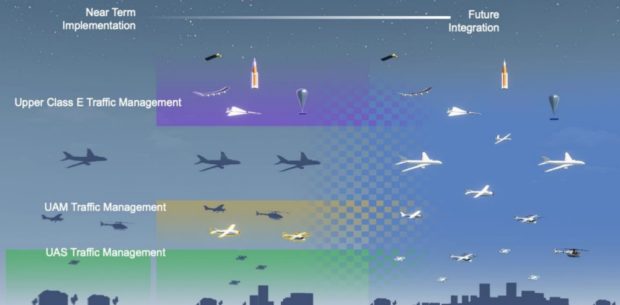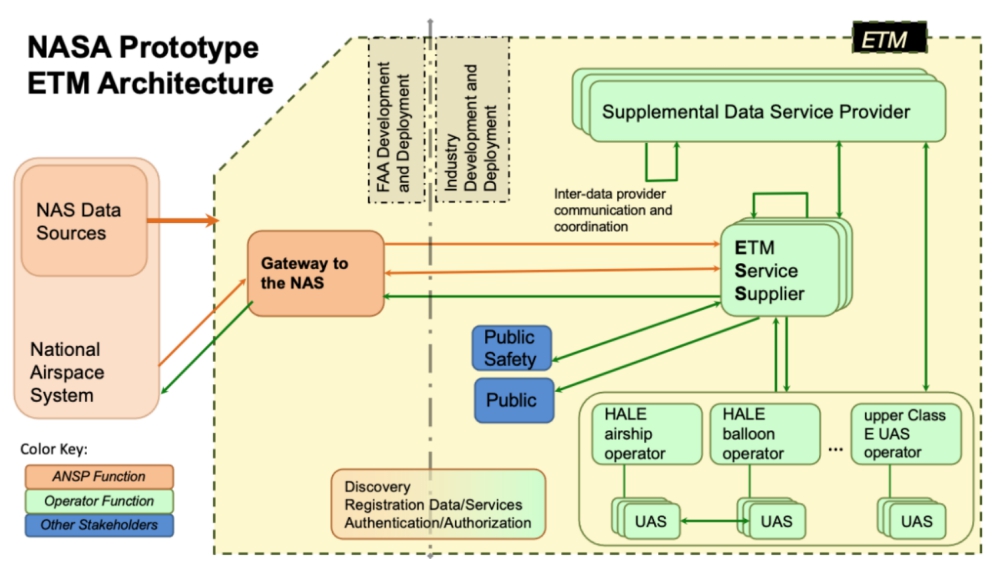NASA’s Unmanned Aircraft Systems (UAS) Traffic Management (UTM) project introduced a new Air Traffic Management (ATM) architecture that utilizes industry’s ability to supply industry-developed, third-party services that work complementarily with the FAA-provided Air Traffic Service (ATS) to exchange relevant air vehicle information among the UAS operations and between the UTM and the conventional ATM system.
The UTM architecture was used to successfully demonstrate the feasibility of safe, efficient, and scalable small UAS operations in low altitudes below 400 feet above ground level. Following the success and adoption of UTM architecture, the foundational UTM requirements and core properties were generalized to become Extensible Traffic Management (xTM) requirements to support operations of new entrants beyond small UAS, such as operations in high altitudes over 60,000 feet, designated as upper Class E in the United States National Airspace System (NAS).
In this paper, the generalization of UTM to xTM and NASA’s approach for developing an xTM system for upper Class E Traffic Management (ETM) are discussed. The paper also discusses the planned research to examine the potential xTM-Air Traffic Control (ATC) interactions across multiple xTM systems and identify common coordination procedures, ATC roles/responsibilities, and data exchange requirements.
This work is one of the steps for improving interoperability between the xTM systems and ATS, which is critical for safe and efficient sharing of the airspace among the new entrants served by the xTM systems and conventional ATS-serviced operations.
Access the 10-page Conference Paper here
Source: NASA


